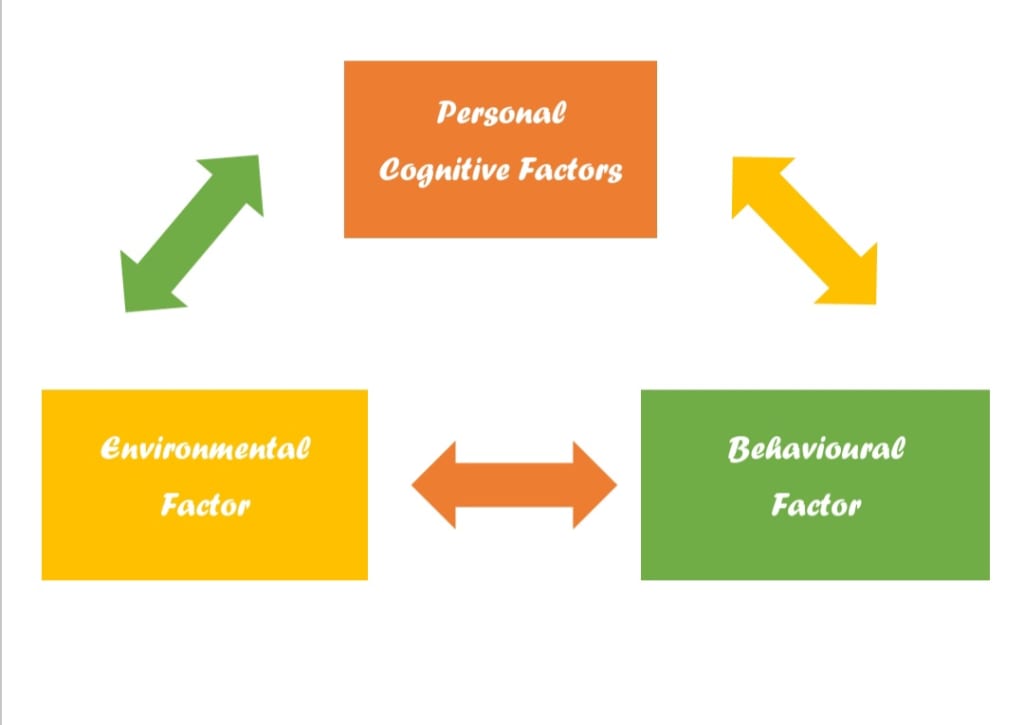"Who Moved My Cheese"
Book Review in the light of Cognitive Theory

Cognitive theory, introduced by Sarnoff A. Mednick, proposes that creative insights can arise from associative processes in memory. According to this theory, ideas are linked together in chains, with more remote associations tending to be more original. Individuals who are more creative are thought to have flatter hierarchies of associations, with many more strong associates for a given concept than less creative individuals. This allows for the activation of far-flung representations simultaneously, which is considered a crucial driver of creative thought.
The concept of cognitive theory can be applied to the book “Who Moved My Cheese?”. The two mice in the story worked together and were able to adapt to change easily. When they discovered that there was no cheese left, they decided to find cheese elsewhere and shifted their focus. This behavior is similar to the associative processes in cognitive theory, where ideas are linked together, and individuals are better able to adapt to change by activating far-flung representations.
Overall, cognitive theory suggests that creativity is not a product of random chance or genius, but rather a result of associative processes in memory. It argues that individuals who have flatter hierarchies of associations are more creative because they have many more strong associates for a given concept. The story of the two mice in “Who Moved My Cheese?” serves as an excellent example of how individuals can adapt to change and activate far-flung representations in memory to achieve their goals.
In addition to cognitive theory, the story of “Who Moved My Cheese?” can also be examined through the lens of the growth mindset. The growth mindset, popularized by psychologist Carol Dweck, suggests that individuals who believe their abilities can be developed through hard work, dedication, and persistence are more likely to achieve success than those who believe their abilities are fixed traits.
The two mice in the story of “Who Moved My Cheese?” embody the growth mindset. They believe that they can find cheese elsewhere, and they are willing to work hard to achieve their goal. In contrast, the two little people in the story represent individuals with a fixed mindset. They believe that their success is determined by external factors, such as the availability of cheese, and they are unwilling to change their ways.
The growth mindset is closely related to cognitive theory in that both emphasize the importance of flexibility and adaptability. In cognitive theory, individuals with flatter hierarchies of associations are better able to adapt to change by activating far-flung representations. Similarly, individuals with a growth mindset are more likely to adapt to change by viewing challenges as opportunities for growth and development.
In the story of “Who Moved My Cheese?”, the two mice represent individuals with a growth mindset, while the two little people represent individuals with a fixed mindset. The mice are willing to adapt to change and take risks, while the little people are resistant to change and are unwilling to take responsibility for their own success.
Another way to interpret the story of “Who Moved My Cheese?” is through the concept of emotional intelligence. Emotional intelligence refers to the ability to recognize, understand, and manage our own emotions, as well as the emotions of others. It is a crucial skill in personal and professional success, as it allows individuals to build strong relationships, manage conflict, and communicate effectively.
In the story, the two mice exhibit a high level of emotional intelligence. They are able to recognize that the cheese has been moved and understand the implications of this change. They do not become angry or frustrated but instead approach the situation with curiosity and a willingness to adapt. This emotional awareness allows them to stay focused on their goal of finding new cheese, despite the obstacles they face.
In contrast, the two little people demonstrate a low level of emotional intelligence. They become angry and resentful when they realize the cheese has been moved, and they blame others for their situation. They are unable to manage their emotions and are unwilling to adapt to change, leading to their eventual downfall.
By examining the story of “Who Moved My Cheese?” through the lens of emotional intelligence, we can see the importance of this skill in navigating change and achieving success. Individuals who are emotionally intelligent are better able to manage stress, build strong relationships, and communicate effectively. They are also more adaptable and resilient in the face of challenges, allowing them to achieve their goals more effectively.
In conclusion, the story of “Who Moved My Cheese?” can be interpreted through multiple lenses, including cognitive theory, the growth mindset, and emotional intelligence. By understanding these concepts and applying them to our own lives, we can become more resilient, creative, and successful individuals.





Comments
There are no comments for this story
Be the first to respond and start the conversation.